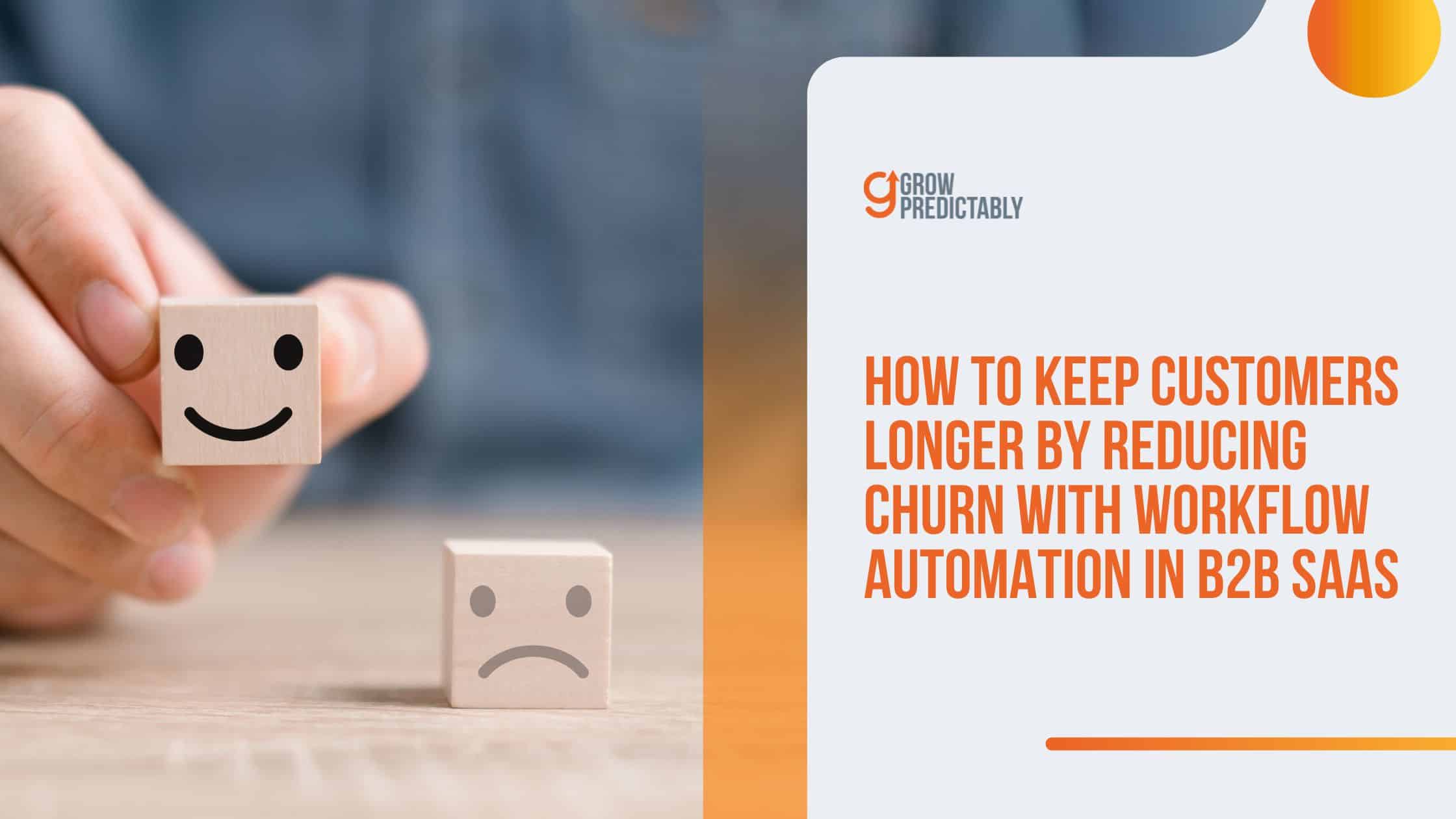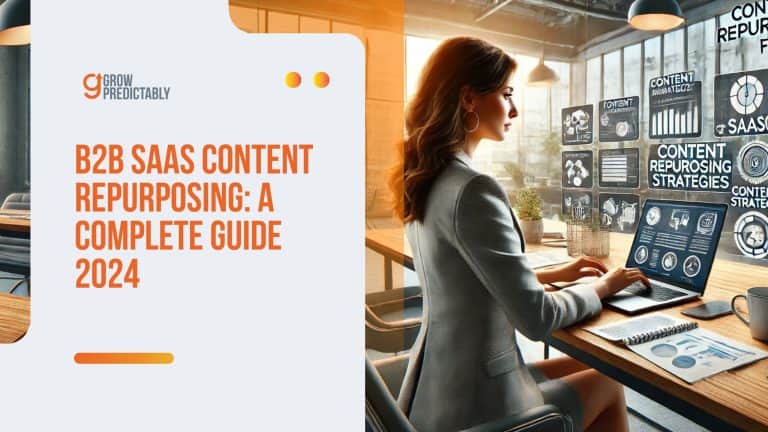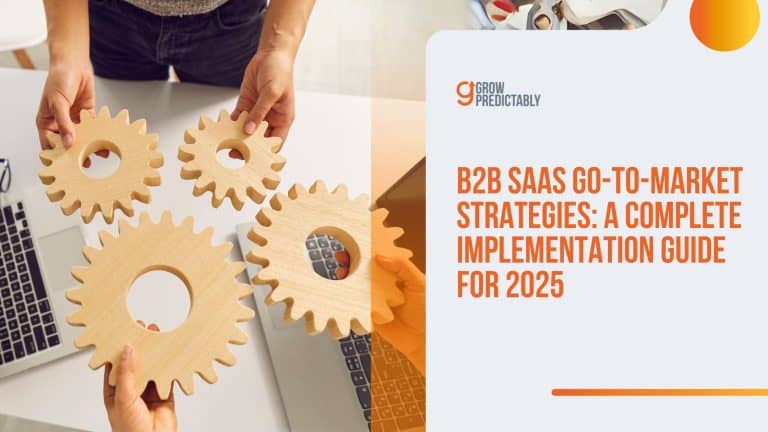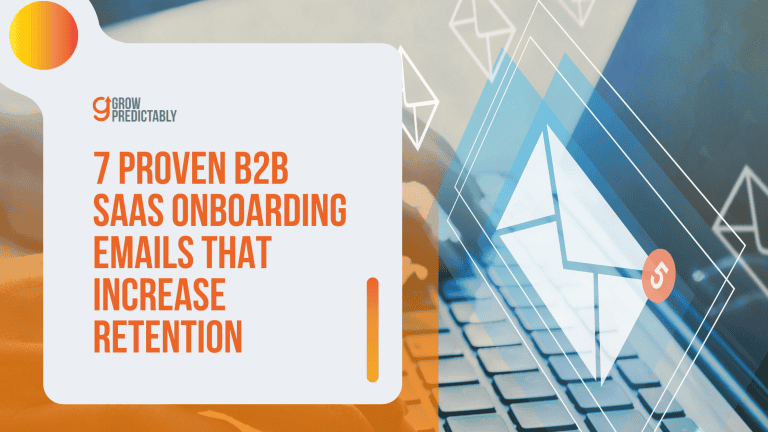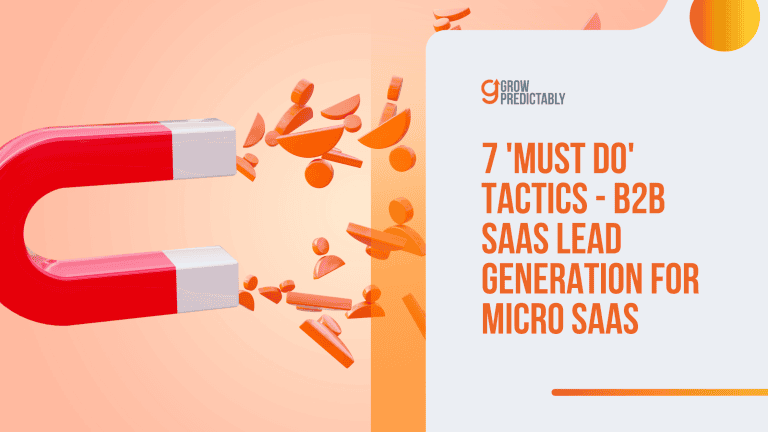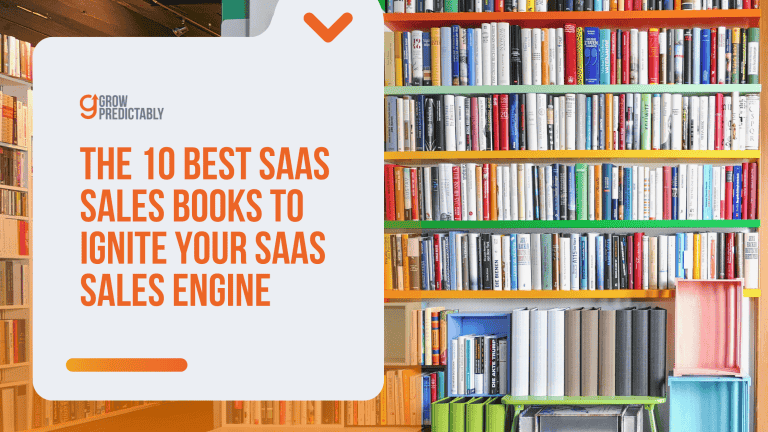How to Keep Customers Longer by Reducing Churn with Workflow Automation in B2B SaaS
Churn hurts.
It’s unpredictable, expensive, and suffocates growth.
Most companies patch the symptoms. Few fix the root causes.
The fastest way to reduce churn?
Automation—when applied correctly.
Get it right, and you’ll save revenue with minimal extra work.
What workflow automation matters most?
Read on to find out.
Understanding Churn in B2B SaaS
Your most unhappy customers are your greatest source of learning.”
Bill Gates
Let’s get real about churn – it’s the silent killer that can stealthily undermine any SaaS company from within.
When customers cease to pay for your software, that’s churn, plain and simple.
Customer churn directly impacts revenue, as the immediate consequence of cancellation leads to both current and future revenue loss.
It’s a pressing issue beyond mere dissatisfaction, often masking larger systemic problems within your service or customer engagement strategies.
Ignoring churn can be costly, and it’s a bigger problem than many anticipate, one that requires strategic and proactive interventions.
Here’s what churn really costs you:
- Direct Revenue Loss: Every customer that leaves means a hit to your recurring revenue, which undermines your financial stability.
- Increased Customer Acquisition Costs: Acquiring new customers to replace those lost typically requires more marketing spend and sales effort, ballooning your costs.
- Negative Impact on Valuation: High churn rates can send warning signals to investors, suggesting your business is struggling, which can decrease its market value.
- Reputation and Word-of-Mouth Marketing: Leaving customers can damage your brand name, and the resulting negative buzz can chase away potential clients before they even get to know you.
- Team Morale and Productivity: Churn can sap employee enthusiasm, leading to diminished productivity and possibly higher staff turnover, which can destabilize your operations.
- Opportunity Cost: Time and resources spent on compensating for churn are time and resources not spent on innovation or improving your current offerings.
Moreover, with customers leaving, you’re not just losing sales; you’re losing valuable data and insights into market trends, making it harder to stay competitive.
Addressing churn is not merely about protecting your revenue; it’s about ensuring your position and adaptability in the marketplace.
The Importance of Customer Satisfaction
Customer satisfaction isn’t just a nice-to-have; it’s your front-line defense against churn and a driving force for growth in the B2B SaaS world.
Meeting customer expectations through proactive engagement and support is essential for reducing churn and fostering long-term loyalty.
Satisfied customers don’t just stick around; they amplify your brand to others, turning a satisfied customer into an evangelist for your business.
This loyalty morphs into one of your most powerful marketing assets, building your brand from the inside out.
Here’s why customer satisfaction is crucial:
- Remain Loyal: Satisfied customers are less likely to leave, providing you with consistent and predictable revenue.
- Provide Positive Feedback: Their positive experiences translate into testimonials and reviews, boosting your brand’s credibility.
- Become Brand Ambassadors: With their endorsements, you acquire new customers more organically and at a lower cost.
Utilizing customer satisfaction scores allows you to track happiness levels and pinpoint areas needing improvement.
This feedback transforms into strategic insights, guiding enhancements to your products or service delivery that directly benefit your customers.
Prioritize satisfaction, and you’ll not only reduce churn but also fortify your business with a community of devoted advocates eager to share your brand with the world.
Types of Churn
Understanding churn involves recognizing its types: voluntary and involuntary.
Both forms affect your bottom line differently, and both require distinct strategies to counteract them effectively.
Voluntary Churn
Voluntary churn occurs when your customers consciously decide to end their subscriptions.
This can be due to dissatisfaction with your product or finding a better alternative in the market.
Tracking customer behavior can help identify reasons for voluntary churn by analyzing interactions and pinpointing dissatisfaction triggers.
To emphasize, ProfitWell notes that a staggering 67% of SaaS cancellations can be attributed to preventable reasons, achievable with better automation and early warning systems.
This signifies that a more proactive customer engagement and satisfaction strategy could substantially mitigate voluntary churn.
Involuntary Churn
Involuntary churn is the result of failed transactions, like expired credit cards or other payment failures.
This silent revenue drainer can account for 20-40% of total churn in SaaS businesses, according to Stripe’s research.
It’s an aspect often overlooked but critically important, easily remedied by implementing robust payment recovery mechanisms and notifications.
Understanding Churn Metrics
If you can’t measure it, you can’t improve it.”
Peter Drucker
Automation is your best ally in sealing the gaps before they grow into major problems that lead to customer churn.
Tracking key metrics, such as payment success rates and churn rate, is essential to inform strategic decisions and enhance customer satisfaction and retention.
Let’s dissect the crucial metrics you need to track in B2B SaaS to get ahead of churn and explore how automation can alert you to issues before customers start walking out the door.
Customer Churn Rate (CCR)
The customer churn rate is a fundamental metric that reveals what percentage of your customer base cancels their subscriptions over a given time, be it monthly or annually.
It’s calculated using the formula: (Lost Customers ÷ Total Customers at Start) x 100.

ProfitWell indicates that a healthy churn rate for B2B SaaS should hover between 3-5% annually.
Leveraging tools like HubSpot for automation can prove invaluable; they alert you when customer engagement drops below predefined levels, allowing for timely intervention before a cancellation occurs.
Revenue Churn Rate (RCR)
This metric goes beyond just the number of customers lost and focuses on the impact on your recurring revenue.
The formula for revenue churn rate is: (Lost MRR ÷ Starting MRR) x 100.

OpenView Partners highlights that top-tier SaaS companies often achieve negative revenue churn, where revenue from existing customers grows faster than what’s lost due to cancellations.
Automation is pivotal in setting up expansion campaigns targeting successful customers and helping maintain or achieve negative revenue churn.
Net Dollar Retention (NDR)
Net Dollar Retention measures the spending behavior of your retained customers over time with the formula: (Current MRR from Year-Ago Customers ÷ MRR from Those Same Customers a Year Ago) x 100.
Research from SaaS Capital shows public SaaS companies average 100-106% NDR.

Automation aids in this area by triggering upsell campaigns when certain usage milestones are reached, ensuring customers continuously derive value from your service.
Quick-Win Metrics That Matter
Focusing on certain quick-win metrics enables you to act swiftly before problems escalate.
- Product Usage Frequency: Automate alerts for declining use to proactively re-engage users.
- Support Ticket Volume: Set up systems to automatically route urgent issues to the right teams.
- Time to First Value: Utilize automation to streamline onboarding processes, ensuring customers quickly realize benefits.
- Failed Payments: Implement automated dunning processes to manage payment failures and recover potential lost revenue.
- Customer Usage Data: Monitor customer usage data to identify popular integrations and track customer progress, allowing you to proactively address needs and ensure satisfaction, thereby reducing attrition rates.
Skip These “Vanity” Metrics
Avoid getting sidetracked by vanity metrics that don’t provide actionable insights into customer health:
- Total User Count: This figure can include inactive users, skewing the perception of active engagement.
- Raw Churn Numbers: These don’t reveal the underlying causes or context of churn.
- Website Traffic: High traffic doesn’t equate to customer satisfaction or retention.
The Role of Workflow Automation in Reducing Churn
At its core, workflow automation takes those mundane, repetitive tasks and customer interactions and moves them to AI and software-driven processes.
This isn’t just about cutting busywork.
It’s about leveraging technology to revolutionize how you engage with your customer base, making every interaction timely, personal, and error-free.
By leveraging customer behavior and usage data through automation, businesses can drive higher engagement and ultimately reduces churn, thereby maximizing customer lifetime value.
How Automation Helps
Automation is the behind-the-scenes engine that ensures your processes are not only faster but more reliable and impactful.
When you automate, you’re committing to excellence.
- Timely Customer Engagement: With automation, every customer interaction happens right when it needs to, enhancing the perception of your brand as attentive and responsive.
- Reduces Manual Errors and Delays: Human errors become a thing of the past, and delays that frustrate customers are minimized, keeping your service smooth and seamless.
- Improves Customer Experience and Satisfaction: Automation ensures consistency and quality in every touchpoint, elevating the overall customer experience and boosting satisfaction levels across the board.
By integrating these benefits, automation doesn’t just streamline your operations—it fundamentally transforms your customer relationships.
Key Areas Where Automation Can Reduce Churn
Targeting the right areas for automation amplifies its impact on reducing churn.
Focus on these key stages in your customer lifecycle to maximize retention.
- Onboarding: Automate the welcome process to set the stage for long-term engagement, ensuring each new user feels valued and understood from day one.
- Engagement: Use automated check-ins and personalized content delivery to keep customers engaged and informed, preventing disinterest and disengagement.
- Support: Automate support tasks and FAQs to provide instant answers and resolutions, reducing frustration and enhancing reliability.
- Renewals: Streamline the renewal process with automated reminders and payment collections, reducing the chance of involuntary churn due to missed payments.
- Feedback Loops: Automate feedback collection and analysis to quickly identify improvement areas and adapt your offerings accordingly.
Strategically integrating automation across these critical areas ensures that you are not only reactive to potential churn triggers but also proactively crafting an experience that keeps customers coming back for more.
This is how you harness technology to not just meet expectations but exceed them.
Maximize the power of your automation by connecting tools like Zapier to centralize all these metrics into a single, cohesive dashboard.
This creates a unified source of truth, enabling you to spot churn risks early and respond promptly.
Ultimately, the aim isn’t to achieve perfect metrics.
The real goal is to identify dissatisfied customers before they decide to leave.
Use automation to monitor these metrics and execute effective plans whenever you see signs of potential trouble.
7 Strategies for Reducing Churn with Workflow Automation in B2B SaaS
Automation is good, so long as you know exactly where to put the machine.”
Eliyahu Goldratt
In the competitive world of B2B SaaS, preventing customer churn is paramount for sustained growth and success.
Employing workflow automation tailored to each stage of the customer journey can significantly enhance customer retention while maintaining efficiency.
Actionable strategies to reduce customer churn are crucial, as high churn rates can severely impact a company’s financial health and growth.
These strategies are designed to address the specific needs of B2B SaaS customers, providing them with a seamless experience from onboarding through to renewal.
1. Make Onboarding Effortless with Smart Automation
A smooth onboarding process sets the stage for customer satisfaction and long-term retention.
Automation during this phase can ensure new customers start with a positive experience, driving engagement and reducing early churn.
- Welcome Email Sequences: Automate emails to greet new users and guide them through the initial steps, creating a welcoming environment.
- Adaptable Product Tours: Develop tours that respond to user interactions, helping them explore features relevant to their needs.
- Scheduled Check-ins: Automate reminders at key phases such as day 7, 30, and 90 to check user progress and satisfaction.
- Track Completion and Engagement: Use automated systems to monitor success metrics and identify any points of friction quickly.
These strategies make onboarding more effective and engaging, directly improving activation rates and fostering a deeper connection with your product from the start.
Emulating Dropbox’s success can lead to significant improvements in activation and customer satisfaction.
2. Scale Customer Success Without Losing the Personal Touch
Maintaining a personal connection with each customer becomes challenging but crucial as your SaaS company grows.
Automation can help scale customer success operations without sacrificing the personalized service B2B clients expect.
- Risk Level Segmentation: Use data to divide customers into risk categories for tailored follow-up.
- Automated Alerts for Engagement Drops: Send immediate alerts to customer success teams when engagement metrics fall.
- Tailored Touchpoints: Develop touchpoints that vary based on customer account value, offering relevant support.
- Monitor Usage Patterns: Automation allows for continuous observation of user behavior to address potential issues preemptively.
- Exceptional Customer Support: Providing proactive, personalized, and accessible support is essential for meeting customer expectations and preventing churn. Effective support processes and trained representatives play a crucial role in customer satisfaction and retention.
These automated processes ensure that customer success teams can act swiftly and appropriately, maintaining high levels of customer satisfaction and loyalty.
With HubSpot’s approach, you can significantly reduce early-stage churn by strategically applying automation.
3. Use Smart Personalization to Keep Users Engaged
Personalization is a powerful tool to keep B2B SaaS users engaged with your product.
By leveraging automation, you can deliver tailored experiences that meet the unique needs of different user profiles.
- Feature Usage Tracking: Identify areas where users may be struggling to help them leverage functionalities more effectively.
- Automated Help Resources: Deliver specific resources automatically when users interact with certain features.
- Custom Training Paths: Create personalized learning journeys based on user roles and behavior to enhance their experience.
- Behavior-Based Churn Prediction: Use analytical models to flag risk areas and allow for timely intervention.
This level of personalization not only drives engagement but also helps preempt issues that might lead to churn, ensuring users continuously find value in your software.
Engaging users on a personal level diminishes the likelihood of churn, transforming them into advocates for your product.
4. Automate Renewals to Reduce Churn Without the Hassle
Renewal time can be a critical point for churn if not handled correctly.
Automating renewal processes reduces friction and improves the customer experience, which is essential for keeping B2B clients on board.
- Smart Payment Retry Sequences: Automate attempts to capture renewal payments in case of initial failure.
- Timely Renewal Reminders: Trigger gentle reminders well in advance of the renewal date to ensure readiness.
- Automated Workflows for Failed Payments: Handle payment issues quickly to prevent unnecessary cancellations.
- Track Renewal Rates: Segment customers to refine strategies and ensure higher renewal rates.
Ensuring that the renewal process is seamless and stress-free strengthens customer relationships, leading to higher retention rates.
5. Build Customer Success Programs
An effective customer success program is pivotal for nurturing enduring relationships and minimizing churn in the B2B SaaS landscape.
By strategically developing these programs, you can ensure that your customers derive maximum value from your offerings and remain loyal over the long term.
- Set Clear Goals: Clearly outline what success looks like for your customers and align your team around these objectives. This focus will ensure everyone is working towards common goals that drive customer satisfaction.
- Dedicated Customer Success Team: Establish a team dedicated to helping your customers achieve these goals, providing the necessary support and guidance to ensure their success with your product.
- Regular Check-ins and Tracking: Consistently engage with customers to track their progress and adjust strategies to better meet their evolving needs. This ongoing dialogue keeps your service relevant and responsive.
- Focus on Personalization: Tailor your services and interactions to address the individual needs and preferences of each customer, thus enhancing their product experience and loyalty.
These components form the backbone of a robust customer success program, ensuring that your SaaS offering is not just a tool, but a valued partner in your customer’s success journey.
6. Use Customer Feedback Effectively
Leveraging customer feedback effectively can be transformative, providing the insights needed to refine your product and significantly reduce churn.
Listening to your customers and acting on their input is vital for continuous improvement.
- Collect Qualitative Data: Engage directly with customers to understand their reasons for leaving or staying, using these insights to inform strategic decisions.
- Act on Feedback: Implement changes based on the feedback received and communicate these actions to your customers, demonstrating that their opinions shape your product development.
- Close the Feedback Loop: Establish a culture that values feedback by continuously integrating it into your development processes, ensuring that your offerings evolve in line with customer needs.
By valuing and acting on customer feedback, you can create a product that truly resonates with its users, building loyalty and reducing churn.
7. Cultivate Community Around Your Products and Services
Building a strong community around your B2B SaaS products is a powerful strategy for enhancing customer loyalty and reducing churn.
A well-engaged community becomes a self-sustaining source of support and advocacy for your brand.
- Online Forums and Platforms: Create spaces where users can share experiences and solutions, fostering a supportive network that enriches the customer experience.
- Organize Events and Webinars: Hosting events enhances relationships and learning opportunities, strengthening the community bond.
- Feature User-Generated Content: Highlight contributions from your community, fostering a sense of ownership and belonging among participants.
- Exclusive Benefits: Provide unique perks to community members, reinforcing their connection and commitment to your brand.
Best Practices for Implementing Workflow Automation in B2B SaaS
The first step in exceeding your customer’s expectations is to know those expectations.”
Roy H. Williams
Implementing workflow automation in a B2B SaaS environment can be a game changer when done right.
Balancing the cost of acquiring a new customer with retention efforts is crucial, as the financial implications of churn can significantly impact growth.
To ensure success, you need a strategic approach that balances efficiency with genuine customer engagement.
Here’s how to make it happen effectively.
Start Small, Then Scale
Jumping headfirst into automation might seem tempting, but the key to sustainable success lies in starting modestly and expanding as you grow.
Focus initially on high-impact areas where automation can deliver the most significant benefits without overwhelming your current ecosystem.
- High-Impact Areas: Begin by automating workflows that are currently bottlenecks or heavy on manual effort and error-prone processes. These are areas like customer onboarding or support response management, where small changes can lead to big wins.
- Gradual Expansion: As these systems prove their value, progressively extend automation to other aspects of your operations, scaling up in manageable phases to ensure stability and control.
This incremental approach allows you to refine processes early, establishing a foundation for broader deployment.
Integrate with Your Tech Stack
For automation to truly elevate your SaaS operations, it must seamlessly integrate with your existing systems and tools.
This connectivity ensures that you harness maximum efficiency from your technology investments.
- CRM Integration: Link automation with your CRM to maintain centralized, updated customer data that drives personalized interactions and insights.
- Customer Success Tools: Integrate with tools that monitor customer engagement and satisfaction, enabling automated alerts and interventions when needed.
- Marketing Platforms: Connect with marketing systems to automate targeted campaigns and track customer responses, optimizing outreach efforts.
Seamless integration helps streamline processes, reduce redundant data entry, and deliver a unified customer experience.
Monitor and Optimize
The work doesn’t stop once automation is in place.
Ongoing monitoring and optimization are vital to ensuring it meets evolving needs and business goals.
- Track Results: Utilize analytics to track performance and identify areas where automation is making a positive impact or where adjustments might be needed.
- Refinement: Regularly refine workflows based on performance data, staying agile and responsive to changing customer dynamics and market demands.
This iterative cycle of monitoring and refining ensures that your automation strategy remains effective and aligned with business objectives.
Balance Automation with Human Touch
Even the most sophisticated automation can’t replace the empathy and nuanced understanding that comes from a human interaction.
Striking the right balance is key.
- Critical Interactions: Identify and preserve the human element in interactions that require empathy, complex problem-solving, or personalized service.
- Personal Element: Use automation to handle routine inquiries and transactions, freeing your team to focus on high-value, human-centric engagements.
Balancing automation with a personal touch ensures that you maintain robust connections with your customers, fostering trust and loyalty while also achieving operational efficiencies.
This dual approach empowers your business to leverage the best of both worlds, enhancing customer satisfaction and retention.
FAQs
Set, Automate, Retain: Your Next Move Starts Now
Churn is the silent killer of B2B SaaS growth.
You don’t need more leads.
You need to keep the ones you already have.
And the best way to do that?
Stop relying on manual processes that let customers slip through the cracks.
Workflow automation isn’t just a “nice to have”—it’s a weapon.
It keeps customers engaged, eliminates friction, and makes sure no renewal goes unnoticed.
From onboarding to support to payments, automation helps you plug the leaks in your business and maximize retention.
The companies winning today aren’t the ones constantly chasing new customers.
They’re the ones keeping the ones they’ve already worked so hard to acquire.
Implement the right automation, and watch your churn drop, your LTV rise, and your bottom line grow.
Now, go make it happen!

